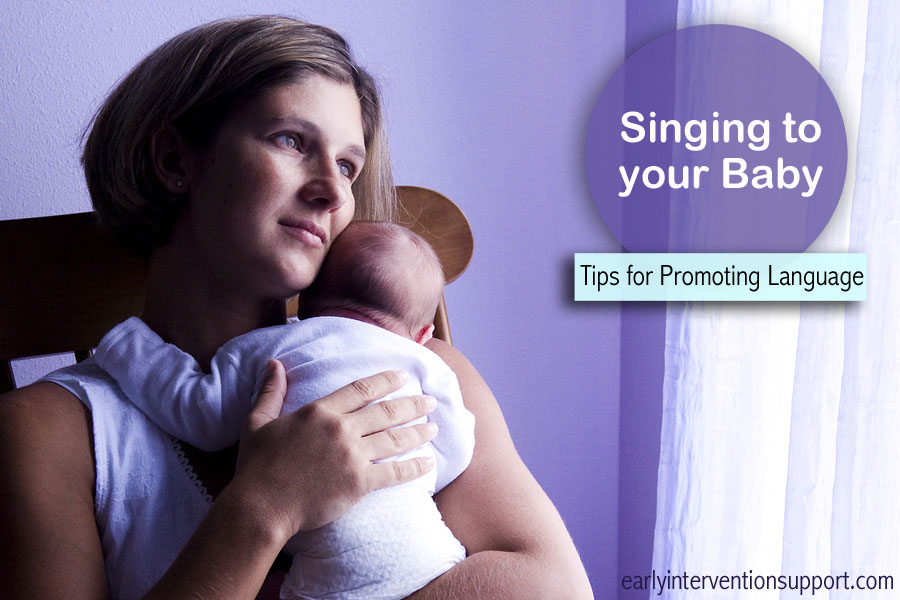Children begin to communicate the moment they are born. From cries to coos, parents learn their child’s communication without the use of words. One fun way parents can interact and play with their child is through music. Music can serve many communicative purposes. Singing a soft lullaby to a tired child can drift the child to sleep. Participating in finger play songs can add excitement and dance during playtime. Reciting a familiar tune may help a child complete a difficult task during a daily routine.
When singing with a child, there are certain strategies to keep in mind in order to promote language and social development.
Position yourself to sit face to face with your child
This helps to build eye contact and allows for the child to watch facial expressions and physical movements to build imitation and social experiences.
Sing familiar songs that are of high interest to the child
If it catches the child’s interest, keep on singing! Songs may include:
- Favorite nursery rhymes (Old McDonald, Twinkle Twinkle Little Star, 5 Little Monkeys, If You’re Happy and You Know It)
- Made-up lyrics to a familiar tune that is special to the parent and the child
- Lyrics to their favorite song on the radio or movie
Sing at a slower rate
The rate at which you sing will help the child to learn the song’s words and actions. This provides time for the child to hear each word and attempt imitation of the word or gesture.
- Once a song becomes familiar, playing with the rate (fast vs. slow) will further develop a child’s awareness of rhythm.
- Clapping, hitting a bowl like a drum, or shaking a noise maker allows the child to participate and feel the rhythm of the song
Establish purposeful opportunities for imitation
- Pause, Wait, and Look expectantly
- Integrate this strategy right before there is a highly familiar word or at a child’s favorite part of the song. Often these words are emphasized, repeated, and are at the end of a phrase in the song
- Examples include: “Twinkle Twinkle Little…STAR”, “Row Row Row your…BOAT”, “Itsy Bitsy Spider went…UP”
- If the child does not immediately imitate, emphasize the word and continue singing. If the word is paired with an action (e.g. UP) assist the child in raising both hands up in the air.
Repeat…Repeat….Repeat!
Children learn through repetition; therefore, the child may request the parent to sing the same song over and over again. This will assist the child in learning and understanding the lyrics of the song, eventually allowing the child to sing along with their parent.
What if my child does not show interest in participating even after using the above strategies?
A parent can observe their child play by watching which toys that he/she takes more interest in. Join in their play and add rhythm and words to describe the actions and objects. For example, if the child is stacking blocks sing “stack, stack, stack, the block” or “knock it down, knock it down, boom boom boom!” Another way to engage the child is to incorporate more movement. Turn on the radio or the child’s favorite CD and march or dance around the room. Encourage the child to join in and participate by imitating the marching or silly dance moves. Finally, having other siblings or peers join in song play can encourage the child to participate. Singing “Ring Around the Rosie” or “The Hokey Pokey” with other young children can increase the child’s interest in joining in musical play.

